Introduction to Fashion Marketing
Importance of Marketing in the Fashion Industry
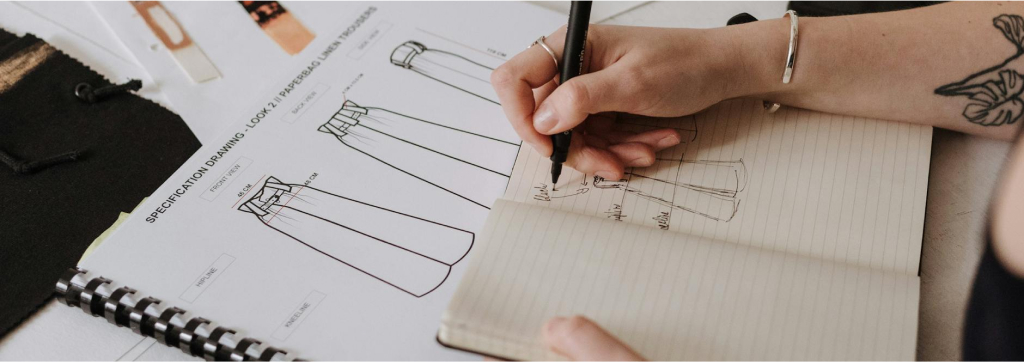
In the dynamic world of fashion, marketing plays a pivotal role in driving brand success and connecting with target audiences.
Currently the global fashion industry is valued at approximately $3 trillion. In 2024, the global apparel market was worth $1.79 trillion and accounted for 1.6% of the world's GDP and is projected to grow at a CAGR of 4.1% from 2024 to 2030.
From crafting a unique brand identity to promoting the latest trends, effective marketing strategies are essential for fashion entrepreneurs looking to make their mark in this competitive industry. Marketing not only helps to boost sales and profits but also serves to build brand awareness, alter consumer perceptions, and foster long-term customer loyalty.
There are many ways to sink a fashion business.
But getting your marketing wrong is probably one of the fastest.
This marketing in fashion guide is designed to help you avoid this very real pitfall. It's based on my over 40 years of proven experience in the fashion industry, and believe me it isn't just a list of platitudes and good intentions.
The truth is that every fashion entrepreneur needs to become a fashion marketer. Your survival in the business of fashion depends on it.
And guess what?
It can also be fun!
Ready to take your fashion marketing to the next level?
Let's get started.
HOW Marketing in Fashion HAS EVOLVED OVER TIME
The world of fashion marketing has come a long way over the years. Let's take a journey through its transformation and see how it's changed!
In the early days, fashion brands relied on traditional methods to get the word out.
Think glossy magazine ads, TV commercials, and eye-catching store displays. But then, something big happened – the internet and social media burst onto the scene, and everything changed.
This digital revolution opened up a whole new world of possibilities for fashion marketing. Suddenly, small brands and independent designers could reach customers all around the globe. It was like fashion got a democratic makeover!
Let's look at some of the early approaches:
- Traveling Mannequins: Before we had fancy media, fashion houses sent dolls dressed in their latest designs on tour. It was like a mini fashion show on the road!
- Fashion Magazines: In the 19th century, fashion magazines became the hot new thing. They showed off designs and set trends like never before.
- Paper Patterns: Around the 1850s, mass-produced paper patterns hit the market. This was huge because it meant middle-class folks could now make high-fashion looks for themselves at home. The rise of home sewing machines around this time made fashion even more accessible and personal.
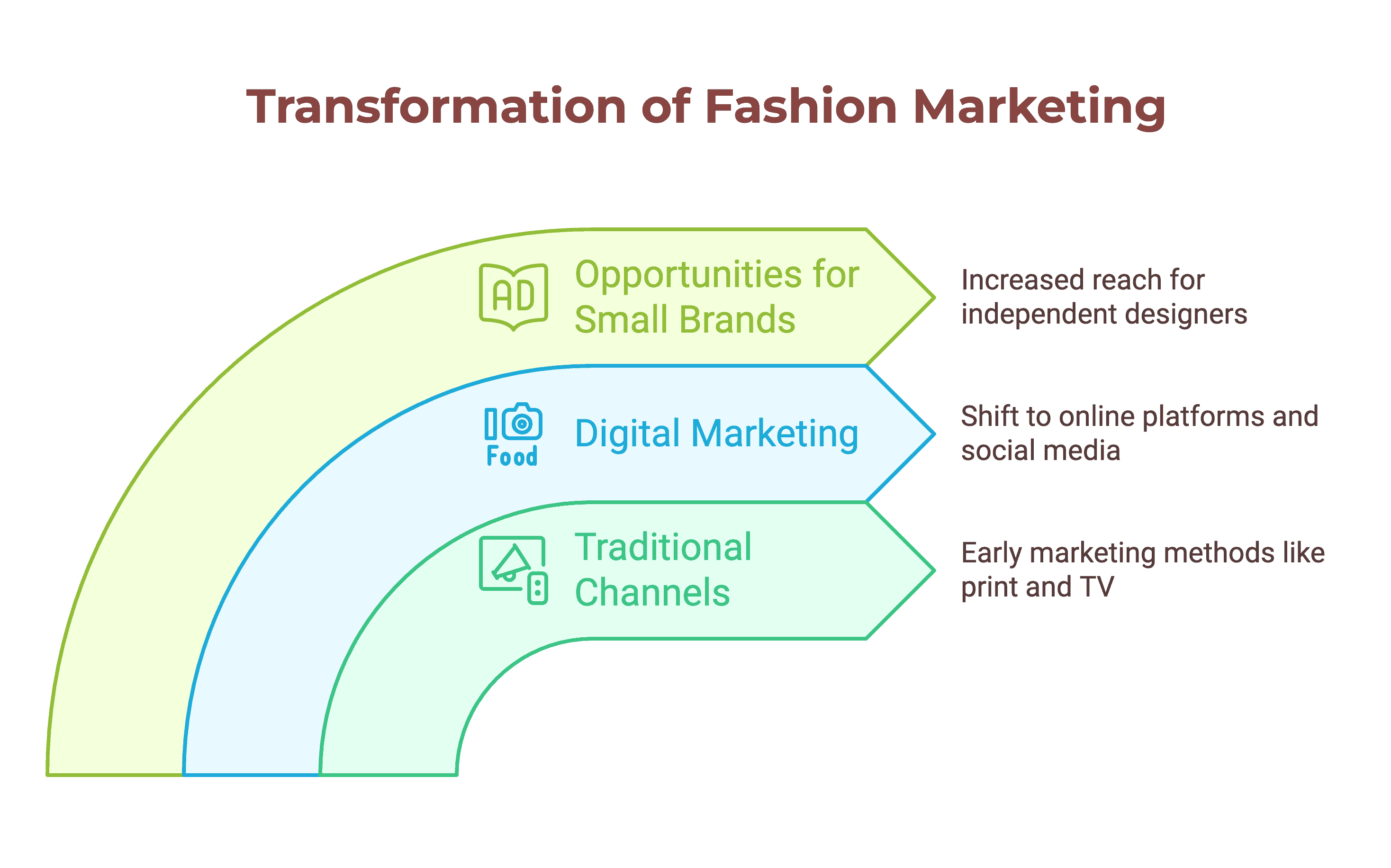
Then came the digital revolution:
The birth of the internet at the end of the twentieth century revolutionized marketing for the fashion industry. All sorts of new communication channels became available for brands of all sizes.
- Online Shopping: In 1995, Amazon and eBay launched, kickstarting the online shopping craze. Suddenly, you could buy the latest fashions without leaving your couch!
- Social Media: Platforms like Instagram, Facebook, and TikTok became must-have tools for fashion brands. They're great for connecting with customers, building buzz, and boosting sales.
- Data-Driven Marketing: With all the data available now, fashion brands can personalize their marketing, make their campaigns more effective, and really understand what customers want.
Early fashion bloggers and social media influencers played a big part in teaching fashion houses to embrace digital marketing, showing just how powerful online communities and user-generated content could be.
Fashion brands are now putting more and more of their advertising budgets into digital advertising.
In 2025, it's expected that apparel and accessories advertisers will spend a whopping $26.10 billion on digital channels. That's a 20.4% increase from the year before!
This shows just how important digital channels have become in reaching fashion-savvy consumers.
In the next section I will begin to outline how to craft a successful marketing strategy for your fashion brand.
The Fundamentals of Marketing in Fashion
HOW TO CRAFT a WINNING Fashion Marketing Strategy
Let's break down what you need to make your fashion marketing strategy a hit!
Know Your Audience
First things first, you need to figure out who you're talking to. Who's your ideal customer? Think about their age, gender, lifestyle, and how they shop. But here's a twist – it's just as important to know who you're NOT targeting. Many fashion entrepreneurs fall into the trap of thinking their product is perfect for everyone. Spoiler alert: it's not! Trying to appeal to everyone usually means you end up appealing to no one.
Stand Out from the Crowd
You need something special that makes your brand different from all the others out there. This is called your Unique Selling Proposition, or USP for short. It's what makes you, well, unique!
Choose the Right Channels
Once you know who you're talking to, you need to figure out how to reach them. This might be through social media, email marketing, or teaming up with influencers. Pick the channels that your target audience actually uses.
Create a Strong Brand Identity
Your brand should have a clear look and feel. This includes things like your logo, colors, and the way you talk to customers. It's all about making your brand easy to recognize and remember.
Measure and Adjust
Here's the thing – you probably won't get it perfect right away. That's okay! Set up ways to measure how well your marketing is working, and be ready to make changes. Getting your marketing right takes time, money, and a lot of hard work.
Remember, creating a great marketing strategy is like learning to ride a bike. You might wobble a bit at first, but with practice and patience, you'll be zooming along in no time!
What Problem Do You Solve?

Let's talk about the heart of fashion marketing: solving problems for your customers.
It might sound strange to think of fashion as problem-solving, but that's exactly what great brands do!
First things first, you need to figure out what problem your products solve for your target audience. Are you making affordable, stylish clothes for people on a budget? Or maybe you're creating eco-friendly fashion for those who care about the environment? Perhaps you're crafting luxury items for customers who want the very best?
Once you know the problem you're solving, you need to turn it into a compelling story. Here's a secret: great fashion isn't just about design. It's about storytelling too! You might love creating products, but learning to tell your brand's story is just as important.
To really nail your marketing, ask yourself these questions:
- Why is this problem important to your customers?
- How hard is it for them to find solutions to this problem?
- What makes your brand the absolute best choice for solving their problem?
By positioning your brand as the solution to a specific need, you make yourself stand out from the crowd. Take Vionic Shoes, for example. They make comfortable shoes for people with foot problems. That's a clear problem and a clear solution!
Here's the most important thing to remember: your marketing isn't about you - it's all about your customer. Think of your customers as the heroes of the story, and your brand as the trusty sidekick helping them save the day.
So, what's your brand's superpower? What problem are you solving?
Figure that out, and you're well on your way to marketing success!
Who is your customer?
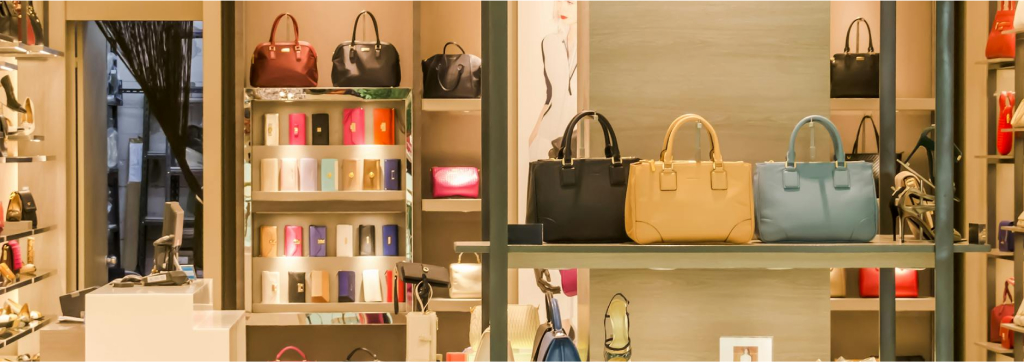
One of the most important parts of a great fashion marketing strategy is knowing your customer.
It's not just about knowing who they are, but having a deep understanding of exactly what makes them tick.
Here's a tip: instead of trying to appeal to everyone, focus on a specific group of people.
Set out to be a big fish in a small pond rather than a small fish in a vast ocean.
By really getting to know your ideal customer - their age, interests, behaviors, and what is important to them - you can create marketing messages and products that really speak directly to their needs and desires.
This targeted approach helps you use your resources better, sell more, and build a loyal fan base. After all, wouldn't you rather be the go-to brand for a specific group of customers than just another name in a long list of brands?
To get you started, let's look at some of the biggest fashion niches:
- Luxury Fashion: This is the big leagues. In 2024, it's expected to make $115.9 billion globally. That's a whopping 31.4% of the luxury market!
- Fast Fashion: This is all about affordable, trendy clothes that change quickly. It's huge and growing - expected to be worth $291.1 billion by 2032.
- Sportswear: With more people focusing on health and wellness, this market is booming. It was worth $182.01 billion in 2022 and is still growing.
- Womenswear: This is the biggest slice of the fashion pie. In 2017, it made up 52.6% of all clothing sales worldwide.
- eCommerce Fashion: Online shopping is taking over. By 2025, it's expected to make $1.357 trillion globally. That's a lot of online shopping!
New trends are always popping up. Here are a few to watch:
- Sustainable Fashion: For people who care about the environment and ethical production.
- Modest Fashion: Catering to those who prefer more covered-up styles, often for cultural or religious reasons.
- Plus-Size Fashion: As brands become more inclusive, this market is growing fast.
Understanding your customer is essential first step in crafting an effective marketing strategy that works in today's crowded marketplace.
What tier are you located in? Mass market, Moderate, Premium or Luxury?
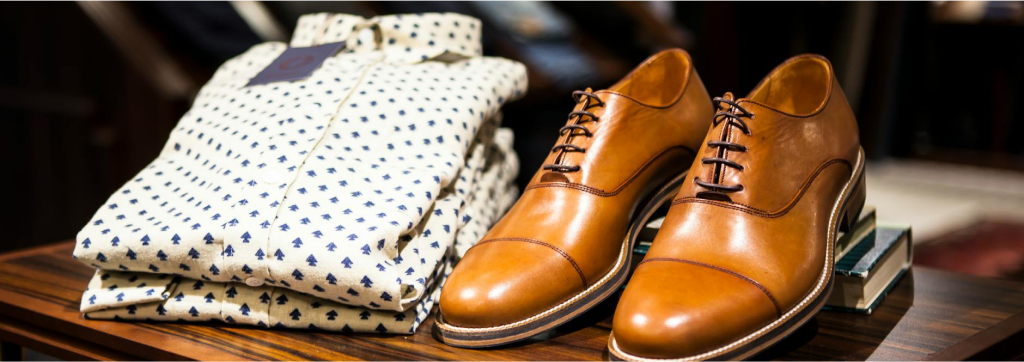
Let's talk about the different levels in the fashion world.
Think of it like a ladder, with each step representing a different price point and quality level. Where does your brand fit?
Mass Market: This is the ground floor. These brands offer affordable clothing for a wide range of people. The trick here is to get your message out to as many people as possible, even if you don't have a big budget. Fun fact: Nike is the king of this category, worth about $75 billion in 2023!
Moderate Market: This is one step up. Customers here spend a bit more to get better quality, but they're not breaking the bank. You'll see a lot of ads in this market because these customers like well-known brands they can trust.
Fast Fashion: This is a special category that's growing super fast. In 2024, it was worth $150.82 billion, and it's expected to more than double to $291.1 billion by 2032. That's growing at a rate of 10.7% each year!
In the United States, the biggest fast fashion brands and their market share percentages are as follows:
Fast Fashion Brand | US Market Share |
|---|---|
Shein | 50% |
Zara | 13% |
H & M | 16% |
Fashion Nova | 11% |
Forever 21 | 6% |
Premium: This is for customers who want high-quality, stylish clothing and are willing to pay more for it.
Luxury: This is the top of the ladder. These brands offer the highest quality and most exclusive products, often with price tags to match.
The luxury fashion market is worth an estimated $350 billion globally. LVMH had the highest market capitalization of any clothing company in December 2023, at approximately $400 billion.
Knowing which tier your brand fits into is super important.
It helps you understand your competition, set the right prices, and know how to talk to your customers. Remember, there's no "best" tier - it's all about finding where your brand fits best and making the most of it!
PICK AN EFFECTIVE BUSINESS MODEL: B2C, B2B or Both?

Let's talk about who you're selling to. In the fashion world, you've got three main options:
B2C (Business-to-Consumer):
This is when you sell directly to the people who'll wear your clothes. You might do this through:
- Online stores
- Physical shops
- Pop-up stores (temporary shops that appear for a short time)
B2B (Business-to-Business):
This is when you sell to other businesses, not to the end customer. Your customers might be:
- Retail stores
- Wholesalers
- Distributors
Both B2C and B2B:
Some brands decide to do a bit of both. They might sell directly to customers and also to other businesses.
Your choice here is super important because it affects everything about how you market your brand. It changes:
- Where you advertise
- What you say in your ads
- How you treat your customers
It also affects how you spend your marketing money. And here's a pro tip: success often comes from making the most of whatever budget you have, no matter how big or small.
Remember, there's no "right" choice here. It all depends on what works best for your brand. Maybe you love dealing directly with customers, or perhaps you prefer working with other businesses. You might even find that a mix of both is perfect for you.
The key is to think carefully about which option fits your brand best, and then go all in on making it work!
What resources do you have AT YOUR DISPOSAL?
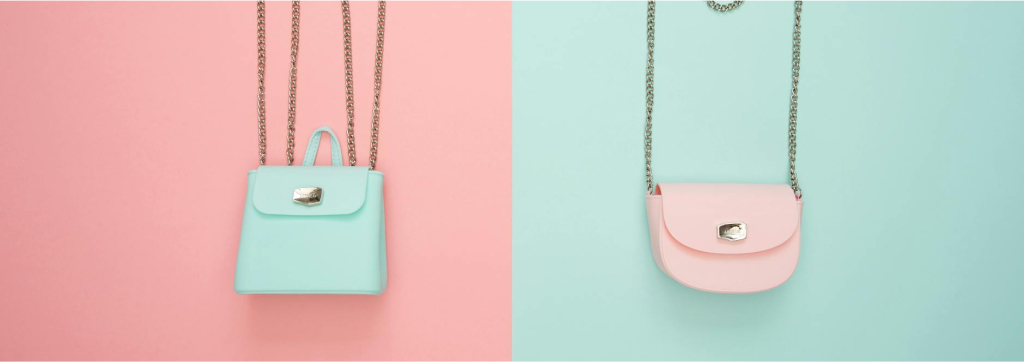
Let's talk about your toolkit. When you're planning your fashion marketing strategy, you need to know what you've got to work with. It's like taking stock of your ingredients before you start cooking!
Here are the main resources you need to think about:
- Money: How much can you invest in marketing?
- People: What skills and expertise do you and your team have?
- Time: How many hours can you dedicate to marketing?
Now, let's be real for a moment. Big fashion brands have a huge advantage here. They've got deep pockets and can afford to try lots of different things. They can even afford to fail a few times before they hit the jackpot.
As a fashion entrepreneur, you probably don't have that luxury. That's why it's super important to have a clear picture of your resources when you're planning your marketing. You need to be smart and careful about how you use what you've got.
Don't forget about tech resources too! Things like:
- E-commerce platforms (your online store)
- CRM systems (for managing customer relationships)
- Data analytics tools (to understand how your marketing is performing)
These can be really powerful tools if you use them right.
Here's the good news: being smaller can actually be an advantage! You can be more focused and quick to adapt than the big guys. Think of yourself as a speedboat compared to their ocean liner. You can change direction quickly, try new things, and really get to know your customers.
Remember, your secret weapons are:
- Speed: You can act fast
- Flexibility: You can change plans quickly
- Resourcefulness: You can make the most of what you have
So, take a good look at what resources you have, and then get creative about how to use them. With the right approach, you can make a big splash even with a small budget!
In the next section we'll dive deep into the online aspects of your fashion business marketing strategy.
Digital Marketing for Fashion Brands
THE Role of Digital Marketing in Fashion Industry
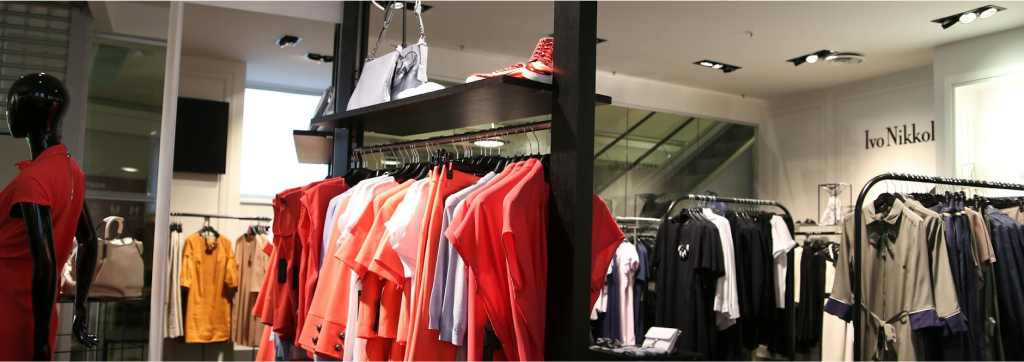
Let's talk about why digital marketing is a big deal in fashion today.
In today's online world, having a strong internet presence is like having a prime spot on the busiest shopping street - it's essential!
Digital marketing is awesome because it lets fashion brands:
- Reach more people
- Connect with customers on a personal level
- Sell through different online channels
Here are some mind-blowing facts:
- By 2027, 23% of all fashion purchases are expected to happen online.
- Even more surprising, 81% of online shopping is happening on mobile phones!
- More than 3 out of 10 online shoppers buy fashion items at least once a month.
Digital marketing gives fashion brands tons of ways to show off their products, tell their story, and build relationships with customers. This could be through social media, websites, or online stores.
Now, you might be thinking, "This sounds great, but how do I actually do it? Why does it seem so complicated?"
Don't worry, you're not alone in feeling this way.
Digital marketing can seem overwhelming at first, but remember, you don't have to do everything at once. Start small, learn as you go, and gradually expand your efforts.
Let's talk money for a moment. How much should you spend on digital marketing?
On average, companies spend about 53.4% of their marketing budget on digital channels. That's more than half!
And if you're a new or growing brand, you will likely need to spend even more to get your name out there and attract new customers.
Remember, digital marketing isn't just an expense - it's an investment in your brand's growth. It's about being where your customers are (online!), telling your brand's story, and making it easy for people to find and buy your products.
While it might seem complicated at first, digital marketing is a powerful tool that can help your fashion brand shine in the crowded online world. Take it step by step, and you'll be amazed at what you can achieve!
So now let's learn about each of the components of an effective digital strategy for fashion brands like yours.
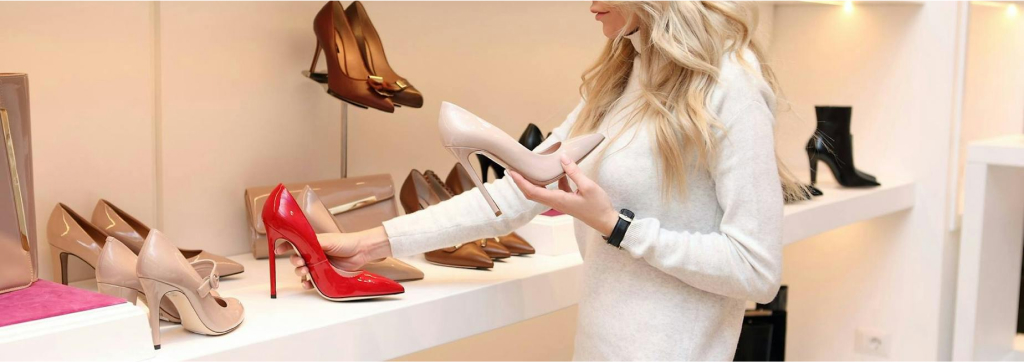
CONTENT MARKETING
Telling Your Brand's Story
Imagine you're at a party. Would you rather talk to someone who only brags about themselves, or someone who shares interesting stories and useful tips?
Content marketing is about being that cool, interesting person at the party, but for your fashion brand.
So, what exactly is content marketing? It's creating and sharing engaging stories that your target audience will love. This could be:
- Blog posts with styling tips
- Fun videos showing off your latest designs
- Beautiful lookbooks that inspire outfit ideas
- Behind-the-scenes peeks at how your clothes are made
By sharing this kind of content, you're not just selling clothes - you're building a relationship with your customers.
You're showing them that you understand their style, their problems, and their interests. This helps them trust your brand and see you as an expert in fashion.
Here's a cool fact: humans are hardwired to love stories. Think about it - since ancient times, people have gathered around campfires to listen to tales. We're "story consumers" at heart.
By using content to connect with your audience, you're tapping into this deep-rooted human characteristic.
In fact, learning to be a great storyteller might be the most powerful marketing skill you can develop. It's not just about describing your products - it's about weaving a narrative that makes people want to be part of your brand's world.
So, don't just sell clothes - tell stories.
Share the inspiration behind your designs, the journey of how a piece is made, or how your clothes can make people feel confident and stylish. This is how you'll stand out in the crowded fashion market and build a loyal following for your brand.
Remember, in content marketing, you're not just a fashion designer - you're a storyteller, a teacher, and a friend to your customers. And that's a powerful position to be in!
SEO Strategies

Imagine you've opened a fantastic new clothing store, but it's hidden down a back alley where no one can see it. That's what having a website without good SEO is like.
SEO, or Search Engine Optimization, is all about making your online store easy to find.
So, what exactly is SEO? It's like giving Google (and other search engines) a map to your website. When you do it right, your site shows up higher in the search results when people look for clothes like yours.
Here are some ways to boost your SEO:
- Use the right words: Include words and phrases that people might use when searching for your type of clothing.
- Make your website user-friendly: Ensure it's easy to navigate and loads quickly.
- Get other websites to link to yours: This is like getting a vote of confidence from other sites.
- Create great content: Share interesting, useful information related to your brand and products.
Now, here's the thing about SEO: it's not a quick fix. It's more like planting a garden. You need to put in work consistently, and it might take months before you see results. Also, some things are out of your control:
- How many other brands are trying to rank for the same words?
- Who's already at the top of the search results?
- How hard are they working to stay there?
When done right, SEO can be a game-changer for your brand. It can help people who are actively looking for products like yours to find your website. But remember, it's just one piece of the puzzle.
Don't put all your eggs in the SEO basket!
Think of SEO as your online store's location. Just like a physical store needs a good spot to attract customers, your website needs good SEO to attract online shoppers.
It takes time and effort, but it can really pay off in the long run.
Social Media Marketing

The Fashion World's Digital Runway
Imagine a place where you can show off your latest designs, chat with customers, and even sell your products - all from your phone. That's what social media offers fashion brands today!
Platforms like Instagram, Facebook, and TikTok have become must-have tools for fashion brands. Why? Because that's where the people are! The average person spends 143 minutes a day scrolling through these apps. If you're not there, you're missing out on a huge opportunity to connect with potential customers.
Instagram: The Fashion Favorite
For many fashion brands, Instagram is the go-to platform. It's like a digital fashion magazine where you can showcase your designs in all their glory. Plus, it's full of influencers who've turned promoting brands into an art form.
The Power of Social Media
Get this: by 2025, sales through social media are expected to triple! And here's another mind-blowing fact: social media influences what 73% of consumers buy. For younger shoppers (Gen Z and Millennials), about 30% say social media ads are most likely to influence what they purchase.
But Wait, There's a Catch...
While social media is important, it shouldn't be your only marketing strategy. Here's why:
- You don't own your audience on social media. The platforms control who sees your posts and can even remove your account if they choose.
- The "overnight success" stories you hear about on social media are rare. For most small brands, getting noticed is tough and building a big following can take over your life if you're not careful.
So, What's the Bottom Line?
Should you be on social media? Absolutely! It's a great way to show off your brand and connect with customers.
Should you rely on it as your main marketing strategy? Nope. It's just one piece of the puzzle.
Think of social media as a powerful tool in your marketing toolbox, but not the only tool. Use it wisely, alongside other strategies like email marketing, your website, and even good old-fashioned word of mouth. That way, you're building a strong, well-rounded marketing approach that doesn't depend on any single platform.
Remember, in the fashion world, it's all about balance - in your designs and in your marketing!
Paid Advertising

The Fast Lane to Fashion Visibility
Imagine having a magic wand that could instantly put your fashion brand in front of thousands of potential customers. That's what paid advertising can do for you!
What is Paid Advertising?
It's like buying a spotlight for your brand. You pay platforms like Google or social media sites to show your ads to specific groups of people. It's fast, targeted, and can give your brand a quick boost in visibility and sales.
The Good News
Thanks to online advertising, it's easier than ever to get your brand in front of millions of eyeballs. You can choose who sees your ads based on things like age, interests, and even shopping habits.
The Not-So-Good News
Just because people see your ad doesn't mean they'll buy your products. Making paid advertising work takes skill and patience.
Here's what you need to know:
- Expert Help is Key: You'll need someone who really knows their stuff to run your ad campaigns. It's not as simple as just clicking "boost post"!
- Be Ready to Experiment: Finding the right mix of ads, audiences, and placements takes time and money. You might lose some cash on ads that don't work before you find the ones that do.
- It's Complicated (On Purpose): Platforms like Google and Facebook make their systems complex. Why? Because the more you experiment, the more money they make.
- Platforms Aren't Your BFFs: Remember, these platforms want to make money too. They're not always working in your best interest. They actually prefer if you have moderate success and keep trying new things, rather than finding one perfect strategy and sticking to it.
- Success Can Be Short-Lived: Even if you find a great ad strategy, it might not work forever. The platforms are designed to keep you coming back and trying new things.
The Bottom Line
Paid advertising can be a powerful tool for your fashion brand. It can help you reach new customers quickly and boost your sales. But it's not a magic solution. It takes time, money, and expertise to get it right.
Think of paid advertising like a fashion show. You need the right designs (your ads), the right audience, and the right stage (ad placements). And just like in fashion, what works today might not work tomorrow. You need to stay flexible and keep learning.
Remember, paid advertising should be part of your overall marketing strategy, not your entire strategy. Use it wisely, and it can help your fashion brand shine in the crowded online world!
Email Marketing

The Fashion Industry's Secret Weapon
You've probably heard people say, "Email is dead." Well, guess what? They're wrong! Email marketing is alive and kicking, especially in the fashion world. Let's dive into why it's so powerful and how you can use it for your fashion brand.
Why Email Rocks for Fashion Brands:
- It's Like Having a Private Conversation: When you send an email, it's just you and your customer. No distractions, no algorithms deciding who sees your message.
- You Own Your Email List: Unlike social media followers, no one can take your email list away from you. It's yours to keep and use.
- It Works: Fashion brands see an average open rate of 18.39% for their emails. That means about 1 in 5 people are reading what you send!
- It Reaches People: Nearly all marketing emails (99.9%) make it to the inbox. Can your social media posts say the same?
- It Builds Trust: Regular emails help you build a relationship with your customers over time.
- It's Visual: You can show off your latest designs in all their glory, just like in a fashion magazine.
How to Make Your Fashion Emails Pop:
- Be Interesting: No one likes boring emails. Make yours exciting!
- Get Personal: Use your customer's name, recommend products based on what they've bought before.
- Show, Don't Just Tell: Use beautiful images of your products.
- Offer Something Special: Exclusive discounts or early access to new collections can make your subscribers feel valued.
- Keep It Regular: Send emails consistently, but don't overwhelm your subscribers.
The Bottom Line:
If you could only do one type of marketing for your fashion brand, email should be it. It's affordable, effective, and gives you direct access to your customers. Plus, it's something you can start small and grow over time.
Remember, email marketing is like designing a collection. It takes creativity, attention to detail, and an understanding of what your audience wants. Get it right, and you'll have customers eagerly awaiting your next email, just like they wait for your next design!
So, don't believe the naysayers. Email isn't dead - it's thriving, especially in fashion. Start building your email list today, and watch your fashion brand grow!
Influencer Marketing

The Fashion World's Online Runway
Imagine having a cool friend who always knows the latest trends and tells everyone about your awesome fashion brand. That's basically what influencer marketing is all about!
What is Influencer Marketing?
It's when fashion brands team up with popular people on social media to show off their products. These influencers are like the popular kids in school, but for the whole internet!
Why It's Hot in Fashion:
- It Works: Influencers affect 42.2% of people's buying decisions. That's huge!
- It's Like Word-of-Mouth: People trust recommendations from people they admire.
- It's Authentic: Good influencers make your brand feel real and relatable.
- It Reaches New People: Influencers can introduce your brand to folks who've never heard of you before.
But Wait, There's a Catch!
Choosing the right influencer is super important. Here's what to look for:
- Honesty: Are their followers real? Do people actually care about what they say?
- Right Fit: Do they match your brand's style and values?
- True Fans: Will they be a real ambassador for your brand, or just do a quick post and forget about you?
Remember, it's not just about finding someone famous. A smaller influencer who really loves your brand might be way better than a big celebrity who doesn't care.
The Long Game:
Don't expect miracles overnight. One post from a mega-star probably won't change your life. Instead, think about building relationships with influencers over time. It's like making friends - it takes time, but it's worth it!
Think about how you act when you see an influencer post. Do you rush to buy right away? Probably not. You might like it, maybe save it for later, and buy when you're ready. Your customers are the same way!
Some Cool Facts:
- Influencers help brands get seen by more people.
- They create trust with their followers, which can make people more interested in your brand.
- You can track how well it's working by giving influencers special links or discount codes.
- It's important to be honest - make sure influencers say when they're being paid to talk about your brand.
The Bottom Line:
Influencer marketing can be awesome for fashion brands. It's like having a bunch of cool friends telling the world how great your brand is. But remember, it's not about quick fixes. It's about building relationships and trust over time.
So, choose your influencers wisely, be patient, and watch your fashion brand grow!
Traditional Fashion Marketing
Fashion Shows

The Ultimate Catwalk for Your Brand
Picture this: lights, camera, action! Models strut down the runway wearing your latest designs. Cameras flash, and the crowd oohs and aahs. Welcome to the world of fashion shows!
What's the Big Deal About Fashion Shows?
Fashion shows are like the Super Bowl of the fashion world. They're where designers show off their newest creations to important people like buyers, journalists, and celebrities. It's a chance to make a big splash and get everyone talking about your brand.
Why They're Still Cool in the Digital Age:
Even though we have Instagram and TikTok now, fashion shows are still important. Why? Because they're like a live movie starring your clothes! They create an experience that people remember, and that can't be replicated on a phone screen.
But Hold Up, It's Not All Glitz and Glamour:
Putting on a fashion show is like throwing the biggest, most complicated party ever. You need to think about:
- PR: Getting the word out about your show
- Celebrities: Inviting the right famous faces
- Photography: Making sure your designs look amazing in pictures
- Models: Finding the perfect people to wear your clothes
- Music: Setting the right mood
- Venue: Choosing the perfect place for your show
- Catering: Keeping everyone fed and happy
- And all of this takes a lot of time, money, and hard work!
The Expert Touch:
If you decide to do a fashion show, make sure you have someone on your team who's done this before. It's not something you want to figure out as you go along!
Remember, It's Just the Beginning:
A fashion show is like a firework - it's bright and exciting, but it doesn't last long. The real work comes after the show. You need to have enough resources (money, time, products) to keep the excitement going long after the last model leaves the runway.
If you don't, another brand will come along and steal the spotlight.
The Bottom Line:
Fashion shows can be amazing for your brand. They can get people excited about your designs and put your name on everyone's lips. But they're also a big investment. Before you decide to do one, think carefully about what you want to achieve and if you have the resources to make it happen.
And remember, a successful fashion show is just the beginning. It's what you do after the show that really counts. Keep the momentum going, and you could see your brand soar to new heights!
So, are you ready for your moment in the spotlight?
Trunk Shows
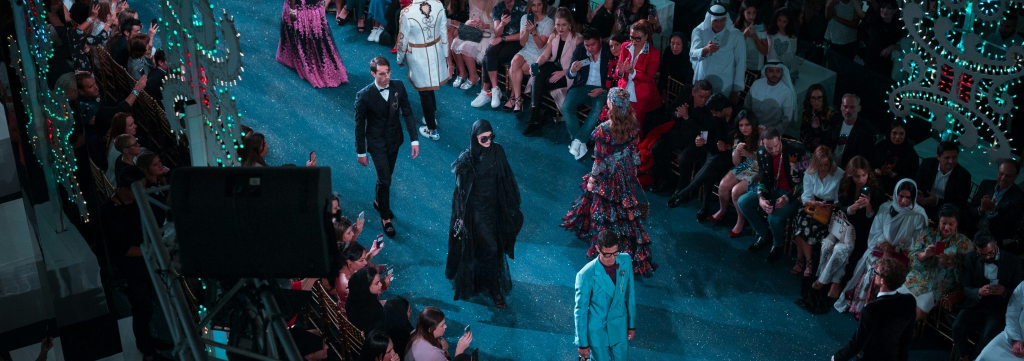
Your Fashion Brand's VIP Party
Imagine throwing a party where your best customers get to see, touch, and try on your latest designs before anyone else. That's what a trunk show is all about!
What's a Trunk Show?
A trunk show is like a pop-up shop mixed with a private party. It's where fashion brands show off their newest products directly to customers in a cozy, personal setting. It's called a "trunk show" because back in the day, designers would literally bring their clothes in trunks to show customers!
Why Trunk Shows are Awesome:
- Get Up Close and Personal: Customers can see and feel your designs up close.
- Answer Questions: You can chat directly with customers about your brand and designs.
- Instant Feedback: Find out what people really think about your clothes.
- Make Sales: People can buy your designs right then and there.
- Create Buzz: It feels exclusive, which makes people excited to attend and buy.
The Best Part? They're Easier Than You Think!
Compared to a big fashion show, trunk shows are much simpler to organize. Sure, there are still details to manage, but once you've done a few, you'll get the hang of it. Each one gets easier!
How to Rock Your Trunk Show:
- Choose the Right Venue: Pick a place that fits your brand's style.
- Invite the Right People: Focus on your best customers and potential new fans.
- Set the Mood: Create an atmosphere that matches your brand.
- Be Prepared: Have enough stock, a way to process payments, and maybe some snacks and drinks.
- Follow Up: After the show, reach out to attendees to thank them and keep the connection going.
The Magic of Trunk Shows:
Trunk shows create a special connection between you and your customers. It's not just about selling clothes; it's about building relationships. When people meet the designer and hear the stories behind the designs, they feel more connected to your brand.
Plus, the exclusive feel of a trunk show can encourage people to buy on the spot. After all, who doesn't love having something before everyone else?
The Bottom Line:
Trunk shows are a fantastic way to showcase your fashion brand. They're more intimate than big fashion shows, easier to organize, and can really help you connect with your customers. Plus, they can lead to sales and valuable feedback about your designs.
So why not give it a try? Your next big fan might be waiting to meet you at your first trunk show!
Pop-up Stores
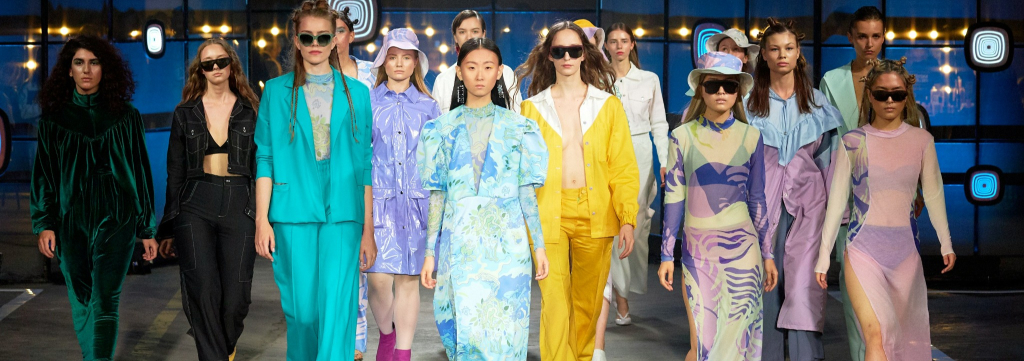
Your Brand's Surprise Party!
Imagine if your favorite online store suddenly appeared in your neighborhood, but only for a short time. That's the magic of pop-up stores!
What's a Pop-up Store?
A pop-up store is a temporary shop that opens for a short time, creates excitement, and then disappears. It's retail with a twist of mystery and urgency!
Think of pop-up stores as a mix between trunk shows and regular stores. You get the personal touch of a trunk show with the setup of a real shop. It's like having your cake and eating it too!
Why Pop-up Stores are Cool:
- Test the Waters: Try out new products or locations without a long-term commitment.
- Create Buzz: The "here today, gone tomorrow" vibe gets people talking and excited.
- Meet Your Customers: Chat face-to-face with the people who love your brand.
- Save Money: It's cheaper than opening a permanent store.
- Be Flexible: Change your location or concept easily.
The Secret Superpower of Pop-up Stores:
Here's the coolest part - pop-up stores are like a giant focus group for your brand.
You get to hear directly from your customers about what they love (or don't love) about your products. This kind of feedback is pure gold for improving your designs and growing your brand.
How to Make Your Pop-up Store Pop:
- Location, Location, Location: Choose a spot where your target customers hang out.
- Make it Instagrammable: Create a space that people want to take pictures of and share.
- Offer Something Special: Exclusive products or experiences make people feel like VIPs.
- Create Urgency: Remind people that your store won't be there forever.
- Engage and Listen: Talk to your customers and really hear what they have to say.
The Bottom Line:
Pop-up stores are a fantastic way to bring your online brand into the real world. They create excitement, let you connect with customers, and give you valuable insights - all without the long-term commitment of a permanent store.
Plus, they're fun! Who doesn't love a good surprise?
So, are you ready to pop up and make a splash with your fashion brand? Your next big opportunity might be just around the corner - literally!
Fashion Retail
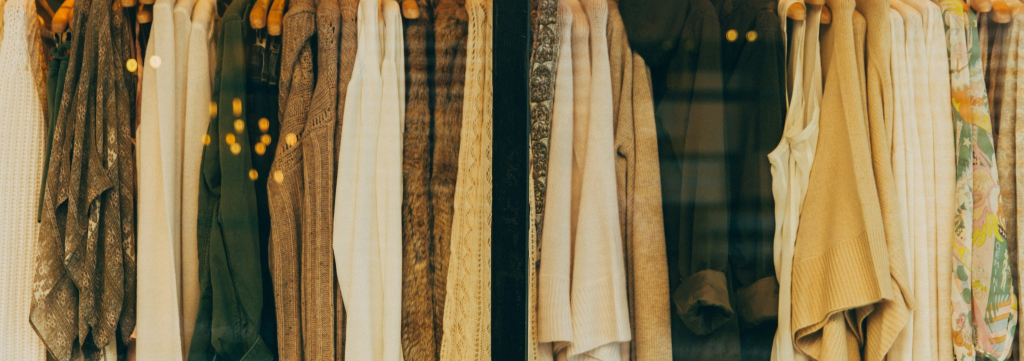
Where Your Designs Meet Your Customers
Imagine your fashion designs on store shelves or featured on a cool website. That's what fashion retail is all about - getting your clothes into the hands of your customers!
What's Fashion Retail?
Fashion retail is how clothes and accessories get from designers (like you!) to the people who wear them.
This can happen in different ways:
- Brick-and-Mortar Stores: Good old-fashioned shops you can walk into.
- Online Stores: Websites where people can browse and buy.
- Department Stores: Big stores that sell lots of different brands.
- Boutiques: Small, specialized shops that often carry unique items.
The goal? To sell clothes, make customers happy, and create awesome shopping experiences!
Online vs. In-Store: The Great Shopping Debate
Here's something interesting: While 96% of Americans shop online, they still spend 65% of their shopping money in physical stores. Why? People love the convenience of online shopping for looking around, but they also enjoy trying on clothes and getting personal service in stores.
How Does This Connect to Fashion Marketing?
Think of fashion marketing as the cool friend who tells everyone about your brand. It's the bridge between your designs and your customers. Good marketing makes people aware of your brand and want your products. Then, retail takes over to make the sale happen.
Why This Matters for Your Brand:
- Customer Experience: Whether online or in-store, how you present your brand affects how people shop.
- Brand Image: Your retail presence (how your products look in stores or online) should match your marketing message.
- Sales Strategy: Understanding how people shop helps you decide where to sell your products.
- Customer Insights: Retail can give you valuable information about what your customers like and don't like.
Tips for Rocking Fashion Retail:
- Know Your Customer: Understand where and how they like to shop.
- Create a Consistent Experience: Make sure your brand looks and feels the same online and in stores.
- Use Technology: Even in physical stores, tech can enhance the shopping experience.
- Be Flexible: Offer options like online ordering with in-store pickup.
- Tell Your Story: Use your retail space (physical or digital) to share your brand's unique story.
The Bottom Line:
Fashion retail is where your designs meet the real world. It's not just about selling clothes - it's about creating experiences that make people fall in love with your brand. Whether it's through a beautifully designed website or a cozy boutique, retail is your chance to bring your fashion vision to life for your customers.
Remember, great fashion marketing gets people excited about your brand, and great fashion retail turns that excitement into sales. When these two work together, that's when the magic happens!
Fashion buyer outreach

Getting Your Designs on Store Shelves
Imagine your designs in your favorite stores. Exciting, right? That's where fashion buyer outreach comes in!
What's Fashion Buyer Outreach?
It's all about building relationships with the people who decide what products stores will sell. These people are called fashion buyers, and they're like the cool kids who decide what gets to be in their club (the store).
Why It's Super Important:
If you want your clothes in stores, you need to make friends with fashion buyers. They're the gatekeepers who can put your designs in front of lots of potential customers.
How to Rock Your Buyer Outreach:
- Do Your Homework: Find stores that fit your brand's style and values.
- Make a Great First Impression: Create an awesome lookbook or catalog of your designs.
- Be Professional: Treat every interaction like a job interview for your brand.
- Follow Up: Don't be afraid to check in, but don't be pushy either.
- Build Relationships: This isn't a one-time thing. Keep in touch and nurture these connections.
Remember, It's a Two-Way Street:
Buyers aren't just doing you a favor by carrying your brand. You need to show them how your designs can help their store succeed too. It's all about creating a win-win situation!
The Long Game:
Building relationships with buyers takes time and effort. It's not something you do once and forget about. You need to stay dedicated and keep at it consistently.
Tips for Success:
- Be Prepared: Have your pricing, delivery times, and minimum orders figured out.
- Know Your Story: Be ready to explain what makes your brand special.
- Be Flexible: Sometimes you might need to adjust your designs or terms to fit a store's needs.
- Stay Updated: Keep buyers informed about new collections or changes in your brand.
- Be Patient: It might take a while to see results, but don't give up!
The Bottom Line:
Fashion buyer outreach is like making new friends for your brand. It takes time, effort, and sometimes a bit of trial and error. But when it works, it can be a game-changer for your fashion brand.
Remember, every big fashion brand started somewhere. With persistence and the right approach, your designs could be the next big thing in stores!
So, are you ready to start making friends in high places? Your future fashion buyers are out there waiting to discover your awesome designs!
Now let's move on to one of the most glamorous strategies in the fashion marketing toolbox: celebrity outreach.
Celebrity Outreach
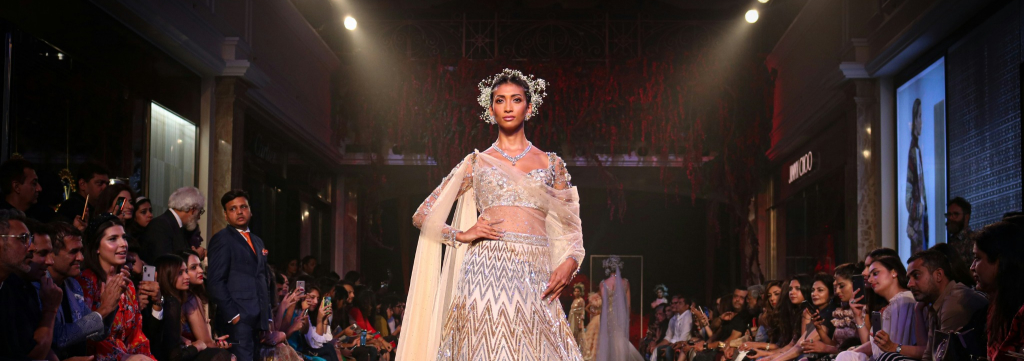
When Stars Align with Your Brand
Imagine seeing your favorite celebrity wearing your designs. Exciting, right? That's what celebrity outreach is all about in the fashion world!
What's Celebrity Outreach?
It's when fashion brands team up with famous people to show off their products. Think of it as getting the coolest kid in school to wear your brand - suddenly, everyone wants to know about it!
Why It's a Big Deal:
- Instant Attention: When a celebrity wears your stuff, people notice.
- Credibility Boost: If a star likes your brand, others might think, "Hey, this must be good!"
- Media Buzz: Celebrities can get your brand in magazines and on TV.
- Influence: Some fans will buy what their favorite celebrities wear.
How to Do Celebrity Outreach:
- Gift Products: Send your best items to celebrities and hope they wear them.
- Sponsor Events: Get your brand at parties or events where celebrities hang out.
- Collaborate: Work with a celebrity to create a special collection.
But Wait, There's a Catch!
Just like with influencers, you need to be smart about which celebrities you work with. Here's what to keep in mind:
- Right Fit: Choose celebrities who match your brand's style and values.
- Authenticity: It should feel natural, not forced.
- Long-Term Thinking: One photo of a big star in your clothes is cool, but it might not change everything overnight.
The Beyoncé Effect:
Let's say Beyoncé wears one of your designs. Amazing, right? But remember, while it's super exciting, it doesn't automatically mean you'll sell out everything. It's a great start, but you need to build on that momentum.
Tips for Success:
- Start Small: You don't need an A-list superstar right away. Look for up-and-coming celebrities or local stars.
- Be Patient: Building relationships with celebrities takes time.
- Offer Value: Think about what's in it for the celebrity, not just your brand.
- Follow Up: If a celebrity wears your brand, make the most of it! Share on social media, reach out to press, etc.
The Bottom Line:
Celebrity outreach can be a powerful tool for fashion brands. It can get people talking about your designs and give your brand a cool factor. But remember, it's not a magic solution. It works best when it's part of a bigger marketing strategy.
So, dream big! Your designs could be on the red carpet one day. But in the meantime, focus on building your brand, making great products, and connecting with your customers. After all, they're the real stars of your fashion story!
The Importance of Images in the Fashion Industry
Organizing an Effective Photoshoot

Bringing Your Fashion to Life
Picture this: Your designs, perfectly styled, captured in stunning photos that make people stop scrolling and say "Wow!" That's the power of a great fashion photoshoot!
Why Photoshoots Matter:
In the fashion world, a picture isn't just worth a thousand words - it's worth a thousand sales! Great photos can make or break your brand. They tell your brand's story, show off your designs, and make people want to buy your clothes.
The Recipe for an Awesome Photoshoot:
- Concept: What's the story you want to tell?
- Location: Where will best showcase your designs?
- Models: Who will bring your clothes to life?
- Styling: How will you put outfits together and accessorize?
- Photography: Who will capture the magic?
Each of these ingredients needs to mix perfectly to create photos that scream "This is our brand!"
The Magic of Great Photos:
Good photoshoots give you content for days! You can use the photos on:
- Your website
- Social media posts
- Ads
- Lookbooks
- And so much more!
Remember: In Fashion, Seeing is Believing
Humans are visual creatures, especially when it comes to fashion. We're drawn to beautiful images. That's why great photos aren't just nice to have - they're absolutely necessary.
Don't Skimp on Quality:
It might be tempting to cut corners to save money, but remember: you often get what you pay for. Investing in professional photography can make a huge difference in how people see your brand.
Tips for a Successful Photoshoot:
- Plan Ahead: Know exactly what you want before the day of the shoot.
- Communicate Clearly: Make sure everyone (photographer, models, stylists) understands your vision.
- Be Prepared: Have all your clothes, accessories, and props ready.
- Create a Mood Board: Use images to show the vibe you're going for.
- Think About Variety: Get a mix of full outfits, close-ups, and lifestyle shots.
- Have Fun: A relaxed, positive atmosphere often leads to the best photos!
The Bottom Line:
A great photoshoot can take your fashion brand from "meh" to "marvelous"! It's your chance to show the world what makes your designs special. Yes, it takes time, effort, and often money to do it right. But the results? They're priceless.
Remember, in the world of fashion, a picture isn't just worth a thousand words - it could be worth a thousand customers! So lights, camera, fashion!
Don’t Forget the Importance of Video

Bringing Your Fashion Brand to Life
Picture this: Your latest design swirling in slow motion, the fabric catching the light just so. Or a behind-the-scenes peek at your creative process. That's the magic of video in fashion marketing!
Why Video is a Must-Have:
In today's world, video isn't just nice to have - it's essential. Why? Because video can tell your brand's story in a way that photos and words alone just can't match. It's like inviting your customers into your world!
Types of Videos You Need:
- Product Videos: Show off your designs in action. Let people see how the fabric moves, how it looks in different lights.
- Behind-the-Scenes Videos: Give a sneak peek into your creative process. People love to see how the magic happens!
- Branding Videos: Tell your brand's story. What inspired you? What makes your brand unique?
The Secret Sauce: Emotion
Here's the key: your videos need to connect with your audience on an emotional level. Maybe they make people laugh, or feel inspired, or just go "Wow!" When you touch people's emotions, they remember your brand.
Quality Matters (But Don't Panic!)
Now, don't worry - you don't need Hollywood-level production for every video. But they should look and sound good enough to keep people watching. Bad lighting or muffled sound can turn viewers off quickly.
Tips for Great Fashion Videos:
- Keep It Short and Sweet: In the age of TikTok, attention spans are short. Make your point quickly!
- Show, Don't Just Tell: Use your videos to demonstrate things that are hard to explain in words or photos.
- Be Authentic: Let your brand's personality shine through.
- Use Music Wisely: The right soundtrack can make your video pop.
- Include a Call to Action: What do you want viewers to do after watching? Tell them!
Ideas to Get You Started:
- A day in the life of your design studio
- How a piece goes from sketch to finished product
- Styling tips using your latest collection
- Customer testimonials (real people wearing your designs!)
- A fun, quick runway show of your new line
The Bottom Line:
Video is like the runway show of the digital world - it's your chance to really showcase what makes your brand special. It doesn't have to be perfect, but it does need to be engaging and true to your brand.
Remember, in the world of fashion marketing, a picture may be worth a thousand words, but a video? That could be worth a thousand customers! So grab that camera (even if it's just your phone) and start telling your brand's story through video. Lights, camera, fashion!
AI Generated Images

The Future of Fashion Marketing?
Imagine creating perfect product photos without a camera, models, or a studio. Sounds like science fiction, right? Well, welcome to the world of AI-generated images in fashion!
What's AI-Generated Imagery?
It's like having a super-smart computer that can create realistic pictures of your designs. These aren't just any pictures - they can show your clothes on different body types, skin tones, and in various styles. All without a real photoshoot!
Why It's Exciting:
- Inclusivity: Show your designs on all kinds of people easily.
- Cost-Effective: No need for expensive photoshoots for every product.
- Virtual Try-On: Customers can see how clothes might look on them before buying.
- Customization: Quickly create images for different markets or seasons.
But Hold On, It's Not Perfect (Yet):
While this tech is super cool, it's not quite ready to take over completely. Here's why:
- Quality Issues: Affordable AI tools might not create perfect images yet.
- Learning Curve: It takes time to figure out how to use these tools well.
- Emotional Connection: Real photos still have a special touch that AI can't always match.
What Should You Do?
- Start Exploring: Try out some AI image tools and see what they can do.
- Keep Learning: This tech is changing fast, so stay updated.
- Mix and Match: Use AI images alongside real photos for now.
- Be Prepared: The future of fashion marketing might look very different!
Remember: It's About Storytelling
At the end of the day, fashion marketing is about telling your brand's story. Whether it's through AI images or traditional photos, the goal is to connect with your audience emotionally.
Tips for Using AI-Generated Images:
- Be Transparent: If you use AI images, let your customers know.
- Focus on Variety: Use AI to show your designs on diverse models.
- Get Creative: Try out wild backgrounds or situations that would be hard to shoot in real life.
- Use for Prototyping: Test out design ideas before making them.
The Bottom Line:
AI-generated images are an exciting new tool in the fashion marketing toolbox. They're not ready to replace traditional photography completely, but they offer some amazing possibilities. As a fashion entrepreneur, it's worth exploring this technology and thinking about how it might fit into your marketing strategy.
Remember, whether it's AI or a real camera, the most important thing is creating images that make people fall in love with your designs. So keep telling your brand's story, one picture (or AI creation) at a time!
Incorporating Innovation in Fashion Marketing
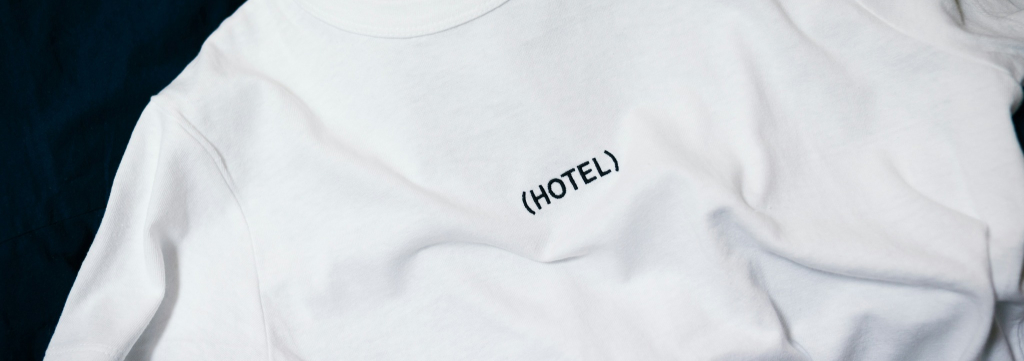
Learn to think out of the box.
When resources are limited, ingenuity is priceless.
Utilizing Generative AI in Marketing Efforts

Your New Fashion Marketing Assistant
Imagine having a super-smart helper who could write your social media posts, answer customer questions, and even help design your marketing campaigns. That's what generative AI can do for your fashion brand!
What's Generative AI?
It's like a really smart computer program that can create text, images, and even chat like a human. It's the tech behind those chatbots you might have seen on websites.
How Can It Help Your Fashion Brand?
- Customer Service Superstar: AI chatbots can answer customer questions 24/7, helping shoppers find the perfect outfit even when you're asleep!
- Content Creator Extraordinaire: Need product descriptions or social media posts? AI can help write them, saving you time and creative energy.
- Personal Shopper: AI can recommend products to customers based on their preferences, like having a personal stylist for every shopper.
- Email Marketing Wizard: Create personalized email campaigns that speak directly to each customer's style.
- Trend Predictor: AI can analyze data to help you spot upcoming fashion trends before they hit the mainstream.
Why It's Exciting:
Generative AI can help you do more with less time and effort. It's like having a marketing team that works around the clock!
But Remember, You're Still the Boss:
While AI is super helpful, it's not perfect. Here's what to keep in mind:
- Stay True to Your Brand: AI can help, but make sure everything still sounds like "you".
- Double-Check Everything: Always proofread what AI creates. Your brand's reputation is on the line!
- Add the Human Touch: AI is great, but it can't replace your unique vision and creativity.
Tips for Using Generative AI in Fashion Marketing:
- Start Small: Try using AI for one task, like writing product descriptions, and see how it goes.
- Personalize: Use AI to create more personalized experiences for your customers.
- Be Transparent: If you're using AI, especially for customer service, let people know.
- Learn and Adapt: AI tools are always improving. Keep learning and trying new things.
- Combine AI with Human Creativity: Let AI handle the routine stuff so you can focus on big-picture ideas.
The Bottom Line:
Generative AI is like having a super-powered intern for your fashion brand. It can help with lots of tasks, freeing you up to focus on what you do best - creating amazing designs and building your brand.
But remember, AI is a tool, not a replacement for your unique vision. Use it wisely, always double-check its work, and never forget that your personal touch is what makes your brand special.
So, are you ready to welcome AI to your fashion marketing team? With the right approach, it could be the boost your brand needs to reach new heights!
Enhancing Customer Communication Strategies
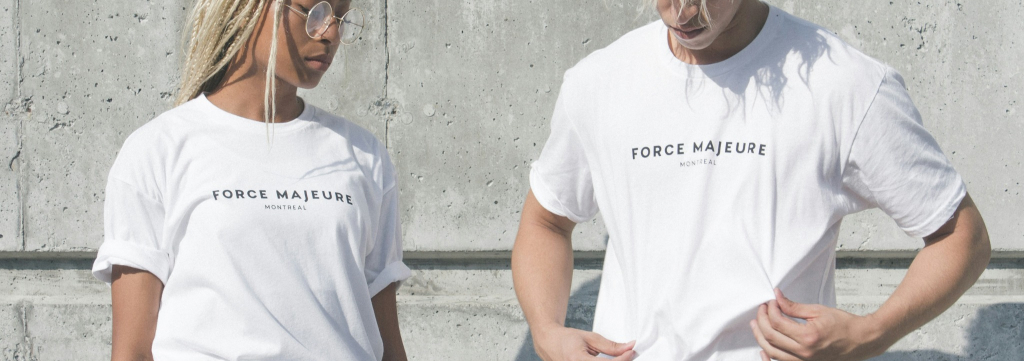
Talking the Talk with Your Fashion Fans
Imagine having a great conversation with your best friend. That's how your brand should talk to your customers! Let's dive into how to make that happen.
Why Great Communication Matters:
Good communication is like the perfect accessory - it completes your brand's look! It helps you:
- Build strong relationships with customers
- Make people love your brand
- Keep customers coming back for more
How to Rock Your Customer Communication:
Be Everywhere (Well, Almost):
- Make sure customers can reach you through:
- Social media (Instagram, Facebook, TikTok)
- Your website
- Customer service phone lines or chat
Get Personal:
- Use data to understand your customers better. Then, talk to them like you know them (because you do!). For example:
- "Hey Sarah, we thought you'd love this new dress - it's just your style!
Listen and Respond:
- When customers talk to you, listen! And always respond quickly. It's like texting back your friends - don't leave them on read!
Be Consistent:
- Your brand should sound the same everywhere. If you're fun and quirky on Instagram, be fun and quirky in your emails too!
Use Tech to Your Advantage:
- Try using tools that help you manage all your communication in one place. It's like having a super-organized assistant!
Ask for Feedback:
- Don't be afraid to ask customers what they think. Their opinions are gold!
Tips for Fashion-Fabulous Communication:
- Show Your Personality: Let your brand's unique voice shine through.
- Be Visual: Use lots of pictures and videos - this is fashion, after all!
- Tell Stories: Share the stories behind your designs or your brand.
- Educate: Give styling tips or care instructions for your products.
- Celebrate Your Customers: Share user-generated content and customer stories.
The Secret Sauce: Make Them Feel Special
The key to great customer communication is making each person feel like your most important customer. It's like being the host of the coolest fashion party, and everyone's invited!
The Bottom Line:
Great customer communication is like having a heart-to-heart with your fashion fans. It's about being there for them, understanding what they want, and making them feel special.
Remember, in fashion, it's not just about what you say, but how you say it. So make every interaction count, from a quick Instagram comment to a detailed email. Your customers will love you for it, and they'll keep coming back for more of your fabulous fashion!
So, are you ready to start some stylish conversations with your customers?
Leveraging Sustainability Standards

Fashion That Feels Good and Does Good
Imagine wearing a super stylish outfit that not only makes you look good but also helps the planet. That's what sustainable fashion is all about!
Why Sustainability is Hot in Fashion:
More and more people care about how their clothes affect the environment and the people who make them. It's like being a fashion superhero - you can look great while saving the world!
How to Make Your Brand Sustainably Stylish:
- Use Earth-Friendly Materials:
Think organic cotton, bamboo, hemp, or even fabrics made from recycled plastic bottles. It's like giving trash a fashion makeover! - Be Open and Honest:
Tell your customers exactly how and where your clothes are made. It's like giving them a backstage pass to your brand. - Partner with Do-Good Organizations:
Team up with groups that care about the environment and fair treatment of workers. It's like joining a superhero team for fashion! - Share Your Sustainability Story:
Use social media, your website, and even your product tags to tell people about your eco-friendly efforts. Make it fun and engaging! - Walk the Talk:
The most important thing? Really believe in what you're doing. Your customers can tell if you're just pretending to care.
Cool Sustainability Facts:
- Lots of people, especially younger shoppers (Millennials and Gen Z), care a lot about buying from brands that are good for the planet.
- The COVID-19 pandemic made even more people think about where their clothes come from.
- Customers want to know the whole story of their clothes - from who made them to how they affect the environment.
Fun Ideas to Show Off Your Sustainability:
- Host a "Trash to Treasure" fashion show using recycled materials.
- Create fun social media challenges around sustainable fashion.
- Offer a "repair workshop" to teach customers how to make their clothes last longer.
- Partner with eco-friendly influencers for cool collaborations.
Remember: It's Not Just About Saving Whales (But That's Cool Too!)
Being sustainable isn't just about big, dramatic gestures. It's about making smart, kind choices in every part of your business. And yes, if you end up saving some whales or baby elephants along the way, that's awesome!
The Bottom Line:
Sustainability in fashion is more than just a trend - it's the future. By making your brand more sustainable, you're not just helping the planet, you're also connecting with customers who care about these issues.
Remember, the key is to be genuine. Don't just talk the talk, walk the walk (in stylish, sustainable shoes, of course!). When you truly believe in what you're doing, your passion will shine through and inspire your customers.
So, are you ready to make your fashion brand a force for good? It's time to strut your stuff on the runway of sustainability!
Creating an Effective Fashion Marketing Strategy
Defining YOUR Target Audience

Finding Your Fashion Tribe
Imagine throwing a party. You wouldn't invite just anyone, right? You'd want people who love the same music, food, and fun as you do. That's exactly what defining your target audience is all about in fashion marketing!
Why Knowing Your Audience is Super Important:
It's like having a fashion crystal ball. When you know who you're designing for, you can create clothes they'll love and marketing they'll respond to. It's the secret sauce to making your brand a hit!
How to Find Your Fashion Tribe:
Play Detective:
- Dig deep to understand your ideal customer. Ask yourself:
- How old are they?
- Where do they live?
- What do they do for fun?
- What's their style?
- Where do they shop?
Create Customer Personas:
Imagine your perfect customer and give them a name, a life story, and a personality. It's like creating a character for a movie, but this character loves your brand!
Do Your Homework:
Use surveys, social media insights, and sales data to learn more about who's buying your stuff.
Spy on Your Competition:
See who's wearing their clothes. Are those the same people you want wearing yours?
Talk to Real People:
Chat with your current customers. What do they love about your brand? What would they change?
Cool Ways to Get to Know Your Audience:
- Host a focus group (with snacks, of course!)
- Run a contest on social media and see who enters
- Analyze your website traffic to see who's visiting
- Check out fashion forums to see what people are talking about
Remember: Not Everyone is Your Customer (And That's Okay!)
It's tempting to say, "My clothes are for everyone!" But the truth is, trying to please everyone usually means you end up pleasing no one. It's better to be someone's favorite brand than everyone's "meh" brand.
The Magic of Finding Your Tribe:
Once you know who you're talking to, everything gets easier:
- Your designs will be more focused
- Your marketing will be more effective
- Your customers will feel like you really "get" them
The Bottom Line:
Defining your target audience is like finding your fashion soulmates. It's about understanding who will love your brand and why. When you know this, you can create designs they'll adore and marketing that speaks directly to them.
Remember, it's not about excluding people. It's about focusing your energy on the people who are most likely to become your biggest fans. After all, in the world of fashion, it's better to be a few people's perfect fit than everyone's "it'll do."
So, are you ready to find your fashion tribe? Get out there and start discovering who your perfect customers are. Your brand (and your future fans) will thank you!
Get Your Messaging Right

Words That Make Your Fashion Brand Shine
Imagine you've created the most amazing outfit ever. But when you try to tell people about it, you stumble over your words and can't explain why it's so great. Frustrating, right? That's why getting your messaging right is super important in fashion marketing!
Why Words Matter in Fashion:
In the world of fashion, a picture might be worth a thousand words, but the right words can be worth a thousand sales! Your message is like the perfect accessory - it completes your brand's look and makes people want to buy.
The Secret to Great Fashion Messaging:
- It's All About Your Customer:
Here's the big secret: Your brand story isn't really about you. It's about your customer! Make them the hero of your story. Ask yourself:
How does your fashion make them feel?
What problems does it solve for them?
How does it fit into their life story? - Tell a Story:
People love stories. Don't just list features of your clothes. Tell the story of how your customer's life is better because of your brand. - Keep It Simple:
You don't need fancy words. Use language your customers use. It's like chatting with a friend about fashion. - Be Consistent:
Your message should be the same everywhere - your website, social media, even your product tags. It's like having a signature style, but for your brand's voice. - Show Your Personality:
Let your brand's unique vibe shine through your words. Are you fun and quirky? Elegant and sophisticated? Whatever you are, own it!
Why Getting Your Message Right is So Important:
Here's the truth: You can make mistakes in other parts of your marketing and still survive if your message is strong. But even the coolest designs and the fanciest ads won't save you if your message is weak.
Tips for Crafting Your Perfect Message:
- Write like you're talking to your best friend
- Use words that paint a picture
- Focus on benefits, not just features
- Test your message on real people and get their feedback
- Don't be afraid to revise and refine
Remember: Words Have Power
The right words can make someone fall in love with your brand before they even try on your clothes. They can turn a casual browser into a loyal customer.
The Bottom Line:
Your message is the voice of your brand. It's how you tell the world who you are, what you stand for, and why your fashion matters. Don't rush it. Take the time to get it right.
Think of it this way: If your fashion brand was a person at a party, what would it say? How would it introduce itself? That's your message. Make it count!
So, are you ready to find the perfect words to make your fashion brand unforgettable? It's time to start crafting a message that's as stylish as your designs!
Setting Clear Marketing Goals

Your Fashion Brand's Roadmap to Success
Imagine setting out on a road trip without knowing where you're going. Sounds crazy, right? That's what running a fashion brand without clear marketing goals is like. Let's talk about how to set goals that'll take your brand to the fashion promised land!
Why Marketing Goals Matter:
Goals are like a GPS for your fashion brand. They tell you where you're going and how to get there. Without them, you might be working hard, but not getting anywhere!
How to Set Awesome Fashion Marketing Goals:
- Be Specific:
Don't just say "I want more sales." Say "I want to increase online sales by 20% in the next six months." It's like the difference between saying "I want to look good" and "I want to fit into my favorite jeans by summer." - Make Them Achievable:
Dream big, but be realistic. Setting impossible goals is like trying to make a ball gown in an hour - it'll just stress you out! - Align with Your Big Picture:
Make sure your marketing goals fit with your overall business goals. It's like making sure your shoes match your outfit! - Make Them Measurable:
Choose goals you can track. It's like having a fitness tracker for your brand! - Set a Timeframe:
Give yourself a deadline. It creates a sense of urgency and helps you stay on track.
Examples of Fashion Marketing Goals:
- Increase Instagram followers by 5,000 in 3 months
- Boost website traffic by 30% this quarter
- Get 100 new email subscribers each month
- Increase average order value by 15% in 6 months
But Wait, There's More!
Here's the real secret: While all those goals sound great, what really matters are the goals that directly affect your bottom line. Focus on things like:
- Number of paying customers
- Total lifetime value of a customer
- Number of referrals from existing customers
These are the goals that will keep your fashion brand alive and thriving!
Avoid the Hocus Pocus:
Be wary of goals that sound impressive but don't actually help your business. Having a million followers is cool, but if they're not buying your clothes, what's the point?
Tips for Setting and Achieving Your Goals:
- Write them down and put them somewhere you can see every day
- Break big goals into smaller, manageable steps
- Celebrate your wins, no matter how small
- Be flexible - if something's not working, it's okay to adjust your goals
The Bottom Line:
Setting clear marketing goals is like creating a custom-fit strategy for your fashion brand. It helps you focus your efforts, measure your success, and keep moving forward.
Remember, in the world of fashion marketing, it's not just about looking good on paper. It's about setting goals that will make a real difference to your brand's success. So dream big, plan smart, and get ready to strut your stuff all the way to the top!
Are you ready to set some fabulous goals for your fashion brand? Let's get this fashion show on the road!
Developing and Tracking Marketing Efforts
Keeping Your Fashion Brand on Trend
Imagine you're a fashion designer creating a new collection. You wouldn't just throw random pieces together, right? You'd plan it out, choose your fabrics carefully, and make sure everything works together. That's exactly what developing and tracking your marketing efforts is all about!
Step 1: Create Your Marketing Masterplan
Just like planning a fashion collection, you need to map out your marketing strategy:
- Choose Your Channels: Decide where you'll share your message. Instagram? Email? Fashion blogs?
- Plan Your Content: What will you post and when? It's like creating a lookbook for your marketing!
- Set Your Budget: How much can you spend? It's like deciding how much fabric you can afford for your collection.
- Assign Tasks: Who's doing what? Make sure everyone knows their role.
Pro Tip: Create a content calendar. It's like a fashion week schedule, but for your marketing!
Step 2: Put Your Plan into Action
Now it's time to strut your stuff on the marketing runway!
- Start posting on social media
- Send out those email campaigns
- Launch your ads
- Whatever else is in your plan - do it!
Step 3: Track Your Success
This is where it gets really interesting. You need to keep an eye on how your marketing is performing. It's like watching how people react to your latest designs on the runway.
What to Track:
- Website visits: How many people are checking out your online store?
- Social media engagement: Are people liking and sharing your posts?
- Email open rates: Are folks actually reading your emails?
But here's the real secret: The most important things to track are:
- Sales data: Are people actually buying your stuff?
- Customer satisfaction: Do they love what they bought?
These are the numbers that really show if your marketing is working!
Step 4: Learn and Improve
Look at all the data you've collected. What's working? What's not? It's like looking at which pieces from your collection are selling best.
- If something's working great, do more of it!
- If something's not working, try to figure out why and fix it.
- Don't be afraid to try new things. Fashion is all about innovation, right?
Remember: It's a Marathon, Not a Sprint
Marketing is an ongoing process. It's like fashion trends - always changing! Keep testing, learning, and improving.
The Bottom Line:
Developing and tracking your marketing efforts is like being both the designer and the critic of your own fashion show. You create the plan, put it out there, see how people react, and then make it even better.
By staying on top of your marketing performance, you can make sure your fashion brand is always strutting its stuff in style. So get out there and make your marketing as fabulous as your designs!
Are you ready to become the marketing maestro of your fashion brand? Let's make some marketing magic happen!
Define Your Marketing Timeline

Your Fashion Brand's Calendar of Cool
Imagine you're planning the most amazing fashion show ever. You wouldn't just wake up one day and say, "Let's do it today!" right? You'd plan it out, step by step. That's exactly what a marketing timeline is for your fashion brand!
Why a Marketing Timeline is Super Important:
It's like having a backstage schedule for your brand's big show. It keeps everyone on track and makes sure everything happens at the right time.
How to Create Your Fashion Marketing Timeline:
- Start with the Big Picture:
- Look at your whole year. When are the big moments for your brand?
- New collection launches
- Holiday sales
- Fashion week events - Break It Down:
For each big event, list out all the marketing tasks you need to do. It's like creating a to-do list for each outfit in your collection. - Set Deadlines:
Give each task a due date. It's like setting fitting appointments for your designs. - Assign Tasks:
Decide who's responsible for what. It's like choosing which model wears each outfit. - Leave Some Wiggle Room:
Things don't always go as planned in fashion (or marketing). Build in some extra time for unexpected changes.
Cool Tools to Help:
Use a digital calendar, project management app, or even a big wall calendar. Whatever works for you!
Example of a Mini Marketing Timeline:
Let's say you're launching a new summer collection:
- 3 months before: Start teasing the collection on social media
- 2 months before: Send sneak peek emails to VIP customers
- 1 month before: Start your ad campaign
- 2 weeks before: Send press releases to fashion magazines
- Launch day: Big social media reveal and email blast
- 1 week after: Share customer photos and reviews
Remember: Timing is Everything
In fashion, launching a winter coat in July doesn't make sense, right? The same goes for marketing. Make sure your timeline matches up with when your customers are ready to buy.
Benefits of a Great Marketing Timeline:
- Everyone knows what they're doing and when
- You can plan your budget better
- No more last-minute panic (well, less of it anyway!)
- You can see how all your marketing efforts work together
The Bottom Line:
A marketing timeline is like a fashion show rundown for your brand. It keeps everything organized, on schedule, and running smoothly. It helps you make sure you're sending the right message at the right time to the right people.
Remember, in fashion marketing, being fashionably late isn't a good thing! With a solid timeline, you'll always be right on trend.
So, are you ready to plan your fashion brand's marketing masterpiece? Grab your calendar and let's start scheduling some marketing magic!
Analyzing and Optimizing the Marketing Plan

Making Your Fashion Brand's Marketing Even More Fabulous!
Imagine you've just launched your latest fashion collection. You wouldn't just sit back and hope for the best, right? You'd watch how people react, see what's selling, and maybe tweak a few designs for next time. That's exactly what analyzing and optimizing your marketing plan is all about!
Why It's Super Important:
Just like fashion trends change, your marketing needs to evolve too. By constantly checking what's working and what's not, you can make your marketing as stylish as your designs!
How to Analyze and Optimize Like a Pro:
- Keep Your Eyes on the Prize:
Regularly check your marketing performance. It's like watching the crowd at a fashion show to see which outfits get the most "oohs" and "aahs".
Things to look at:
- Sales numbers (the most important!)
- Website visits
- Social media engagement
- Email open rates
- Customer feedback - Listen to Your Customers:
They're your biggest fans! Pay attention to what they say about your brand. It's like having a focus group for your marketing. - Spot the Trends:
Look for patterns in your data. Maybe your Instagram posts do better on Wednesdays, or your email sales spike when you use emojis in the subject line. - Experiment and Learn:
Try new things! Maybe a TikTok challenge or a collaboration with a cool influencer. See what works and what doesn't. - Adjust Your Plan:
Based on what you've learned, make changes to your marketing plan. It's like altering a dress to make it fit perfectly.
If something's working great, do more of it!
If something's not working, try to figure out why and fix it or ditch it. - Rinse and Repeat:
Keep doing this over and over. Marketing optimization never stops, just like fashion never stops evolving!
Cool Tools to Help:
Use analytics tools for your website and social media. They're like having a personal stylist for your marketing data!
Remember: It's All About Getting Better
The goal isn't to be perfect right away. It's about constantly improving and staying fresh, just like in fashion.
The Bottom Line:
Analyzing and optimizing your marketing plan is like being both the designer and the critic of your own fashion brand. You put your marketing out there, see how it performs, learn from it, and then make it even better.
By staying on top of your marketing performance and always looking for ways to improve, you can make sure your fashion brand is always the talk of the town. It's about being as adaptable and trendsetting in your marketing as you are in your designs!
So, are you ready to give your marketing plan a fabulous makeover? Let's turn that data into your next big marketing hit!
Understanding the Modern Fashion Landscape
Trends Shaping the Fashion Industry in 2025

The Future of Fashion is Now!
Imagine stepping into a time machine and zooming forward to the end of 2025. What does the fashion world look like? Let's peek into the crystal ball and see what's trending!
The Big Fashion Trends of 2025:
- Green is the New Black:
Sustainability is hotter than ever! People want clothes that look good and do good for the planet. Think:
- Eco-friendly materials (like fabrics made from recycled plastic bottles)
- Responsible production (no sweatshops, please!)
- Transparent supply chains (knowing exactly where your clothes come from) - Digital Dressing Room:
Technology is changing how we shop and experience fashion. Get ready for:
- Virtual try-ons (no more changing room struggles!)
- Digital-only fashion shows
- Clothes that exist only in the digital world (for your online avatar) - Made Just for You:
People want clothes that feel unique to them. This means:
- Customizable designs
- Personalized recommendations
- Made-to-order pieces to reduce waste
But Wait, There's More!
To really rock these trends, you need to answer three super important questions:
- What problem am I solving?
Are you making sustainable clothes for people who care about the environment? Or creating custom designs for those who want to stand out? - What makes me truly special?
Maybe you use a unique eco-friendly material, or have an amazing customization process. Find your superpower! - Who's going to care the most about what I'm offering?
Who are your fashion soulmates? The eco-warriors? The tech-savvy fashionistas? Know your tribe!
Why These Questions Matter:
Answering these questions is like finding the perfect accessory for your outfit - it completes the look and makes everything come together!
- They help you focus on what's important
- They guide your marketing efforts
- They help you connect with the right customers
The Bottom Line:
The fashion world of 2024 is all about being sustainable, tech-savvy, and personal. But to really succeed, you need to know exactly what you're offering, what makes you unique, and who your perfect customer is.
Remember, trends come and go, but a strong brand identity lasts forever. So, use these trends as inspiration, but always stay true to your brand's core values and vision.
Are you ready to be the trendsetter of 2025? With these insights and a clear understanding of your brand, you're all set to strut into the future of fashion!
Impact of Economic, Political, and Climate Factors on Fashion Businesses
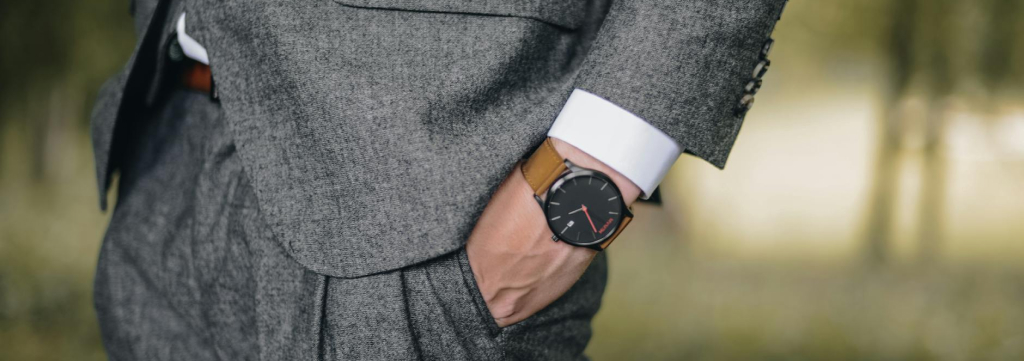
Navigating the Fashion Storm!
Imagine you're sailing a fashion ship through choppy waters. The weather (economy), the sea routes (politics), and the ocean itself (climate) all affect your journey. Let's see how these big factors can shake up the fashion world!
The Big Three Factors:
- Economic Waves:
When the economy goes up or down, it's like a wave hitting your fashion ship.
- In tough times, people might buy fewer designer clothes and look for bargains.
- When times are good, luxury brands might see a boost in sales.
- What it means for you: Be ready to adjust your prices or offer different product lines to match what people can afford. - Political Currents:
Politics can change the direction of your fashion journey.
- New trade deals might make it cheaper (or more expensive) to make clothes in certain countries.
- Changes in laws could affect how you produce or sell your fashion.
- What it means for you: Stay informed about political changes that could affect your business. Be ready to adapt your production or pricing if needed. - Climate Tides:
The changing climate is like a rising tide that affects everything.
- More people want eco-friendly fashion.
- Extreme weather can disrupt production and shipping.
- What it means for you: Think about how you can make your fashion more sustainable. It's not just good for the planet - it's good for business too!
The Secret to Weathering the Storm:
Here's the thing: It's not enough to just talk about these issues. You need to show real action!
Remember: Actions Speak Louder Than Words
Your customers don't just want to hear that you care about the environment or fair trade. They want to see proof!
Instead of saying: "We care about the environment."
Try showing: A picture of the actual trees you've planted or the beach you've cleaned up.
Instead of saying: "We support fair wages."
Try showing: Real stories and photos of the people who make your clothes and how your business has improved their lives.
Tips for Navigating These Choppy Waters:
- Stay Informed: Keep up with news that could affect your business.
- Be Flexible: Be ready to change course if needed.
- Connect with Your Customers: Understand how these big factors affect them too.
- Tell Real Stories: Show the actual impact of your actions, not just empty words.
- Think Long-Term: Make decisions that will help your brand weather future storms.
The Bottom Line:
The fashion world doesn't exist in a bubble. Economic ups and downs, political changes, and climate issues all affect how we make, sell, and buy clothes. But here's the exciting part: These challenges are also opportunities to innovate and stand out!
By understanding these factors and showing real action (not just talk), you can steer your fashion brand through any storm. Remember, in the world of fashion, it's not just about looking good - it's about doing good too!
Are you ready to captain your fashion ship through these exciting times? With awareness, flexibility, and authentic action, you can turn these challenges into your brand's superpowers!
The Future of Fashion Marketing
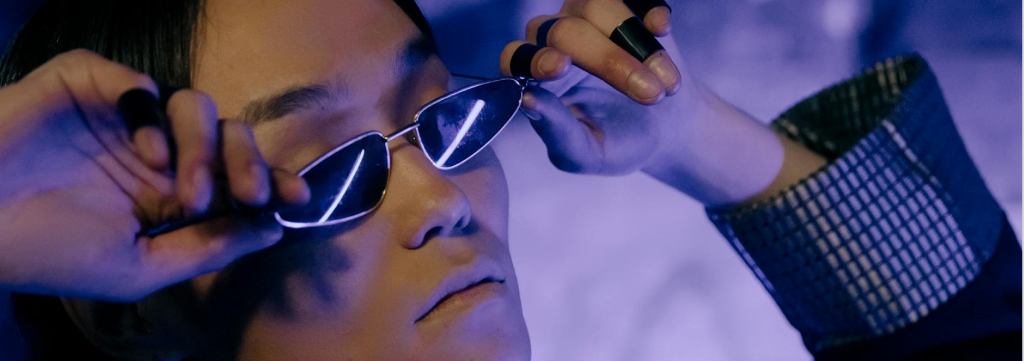
Get Ready for a Wild Ride!
Imagine fashion marketing in the future - it's like stepping into a sci-fi movie, but for clothes! Here's what's coming:
- Digital Takeover:
Marketing is going more online than ever. Think virtual fashion shows and trying on clothes in augmented reality! - Smart Marketing:
Artificial Intelligence will help brands understand exactly what you want, maybe even before you do! - Green is the New Black:
Brands will need to show they care about the planet and all kinds of people. It's not just trendy, it's necessary! - Personal Touch:
Marketing will feel like it's made just for you. No more one-size-fits-all ads!
To keep up, fashion brands need to be quick, creative, and really listen to what their customers want.
Final Thoughts: Rocking Fashion Marketing in 2025
So, what's the big takeaway? Marketing is super important for fashion brands, and it's always changing. The secret sauce?
- Stay up-to-date with new trends
- Use cool new tech
- Really get to know your customers
Remember, great marketing can happen online, offline, or both. The key is to be real, flexible, and always put your customers first.
It's All About Them, Not You!
By using the tips in this guide, you can keep your fashion brand sailing smoothly, even when things get stormy.
I know it might seem overwhelming, but think of it as a fun challenge. If you have fun with your marketing, your customers will notice and have fun too!
Mix things up, keep your audience entertained, and you'll build relationships that lead to sales and loyal fans. That's the ultimate goal in fashion marketing!
Last but not least...
Marketing your fashion brand is like creating the perfect outfit. It takes time, creativity, and a bit of trial and error. But when you get it right, it's absolutely fabulous! So go out there and make your brand shine!

How Can I Be of Help To You?
Trends Shaping the Fashion Industry in 2025
Let me be honest
Marketing and sales are often the topics my customers least want to focus on.
Why?
Precisely because they are hard to master and it's easy to see how the money goes out the door and doesn't come back.
And that's what I'm here to help you with.
Me and my team of expert collaborators can help you steer these turbulent waters and get your message out to your audience.
After all, almost nothing is more important in your business.
Interested in having a conversation?
Here's a link to my calendar
Marketing in Fashion FAQs
Is fashion marketing the same as business marketing?
While they share many ideas and strategies, fashion marketing has its own unique flavor. The fashion world has special rules that have been around for ages. To succeed, you need to understand how fashion marketing is different from regular business marketing. It's like knowing the difference between a runway show and a business presentation!
What is affiliate marketing for fashion products and how can you get started?
Affiliate marketing is like having a team of cheerleaders for your brand. Fashion companies partner with influencers or websites, giving them a special link. When someone buys through that link, the partner gets a commission. Want to be an affiliate? Check out fashion brand websites for "Affiliate" or "Partner with Us" links. It's a win-win!
I need advise on how to establish a marketing and promotion budget for my fashion startup. What should I do?
That’s what I’m here to help you with! Here is a link to my calendar. Schedule an appointment and we can discuss your fashion startup’s needs together.
Is fashion marketing a good job?
Absolutely! If you're smart, hardworking, and love fashion, it's a fantastic career. The fashion world needs clever marketers to help brands shine in a crowded market. It's like being the designer of a brand's success story!
How do I grow / scale my clothing brand?
Growing a clothing brand is like putting together the perfect outfit - everything needs to work together. You need great marketing, but also solid production, pricing, and distribution. Sounds tricky? Don't worry, I’m here to help.
How accurate is the portrayal of the marketing and fashion industry in Emily in Paris?
Hollywood loves to glam things up! While fashion marketing can be exciting, it's not all parties and drama. There's a lot of behind-the-scenes work that makes the magic happen. If you love fashion, building a brand can be amazing - just remember, it's not all fashion shows and fancy dinners. But the hard work is totally worth it!

